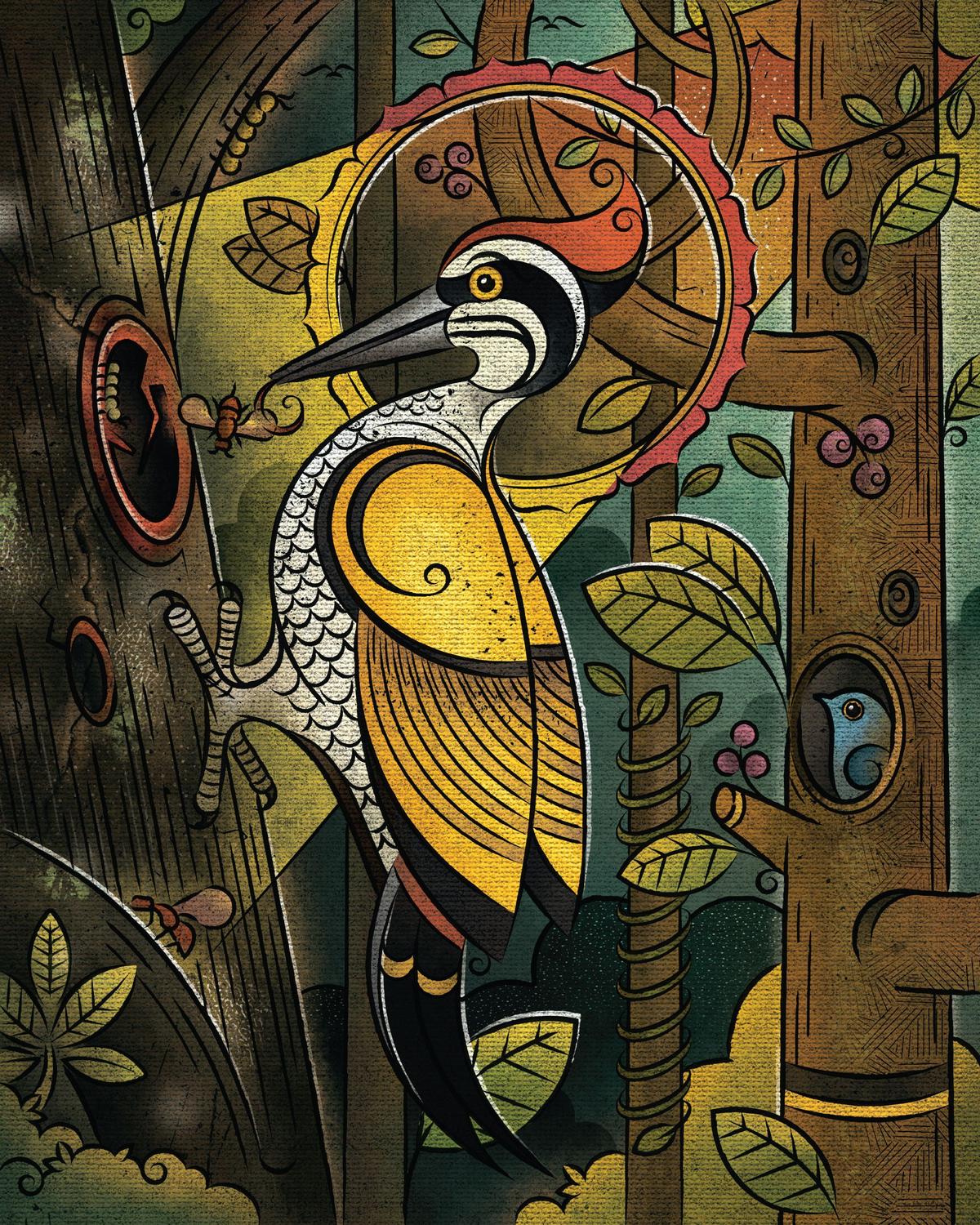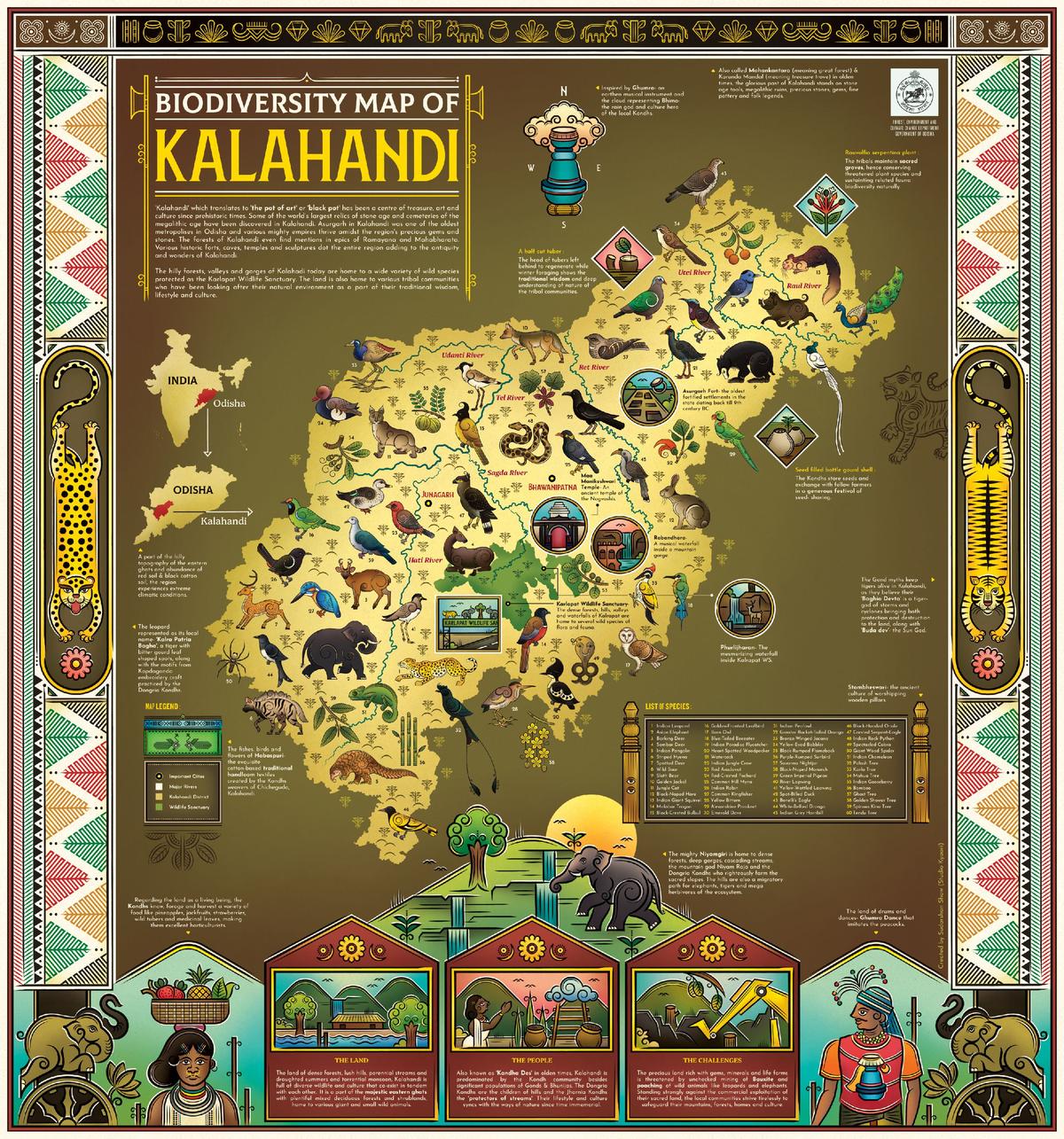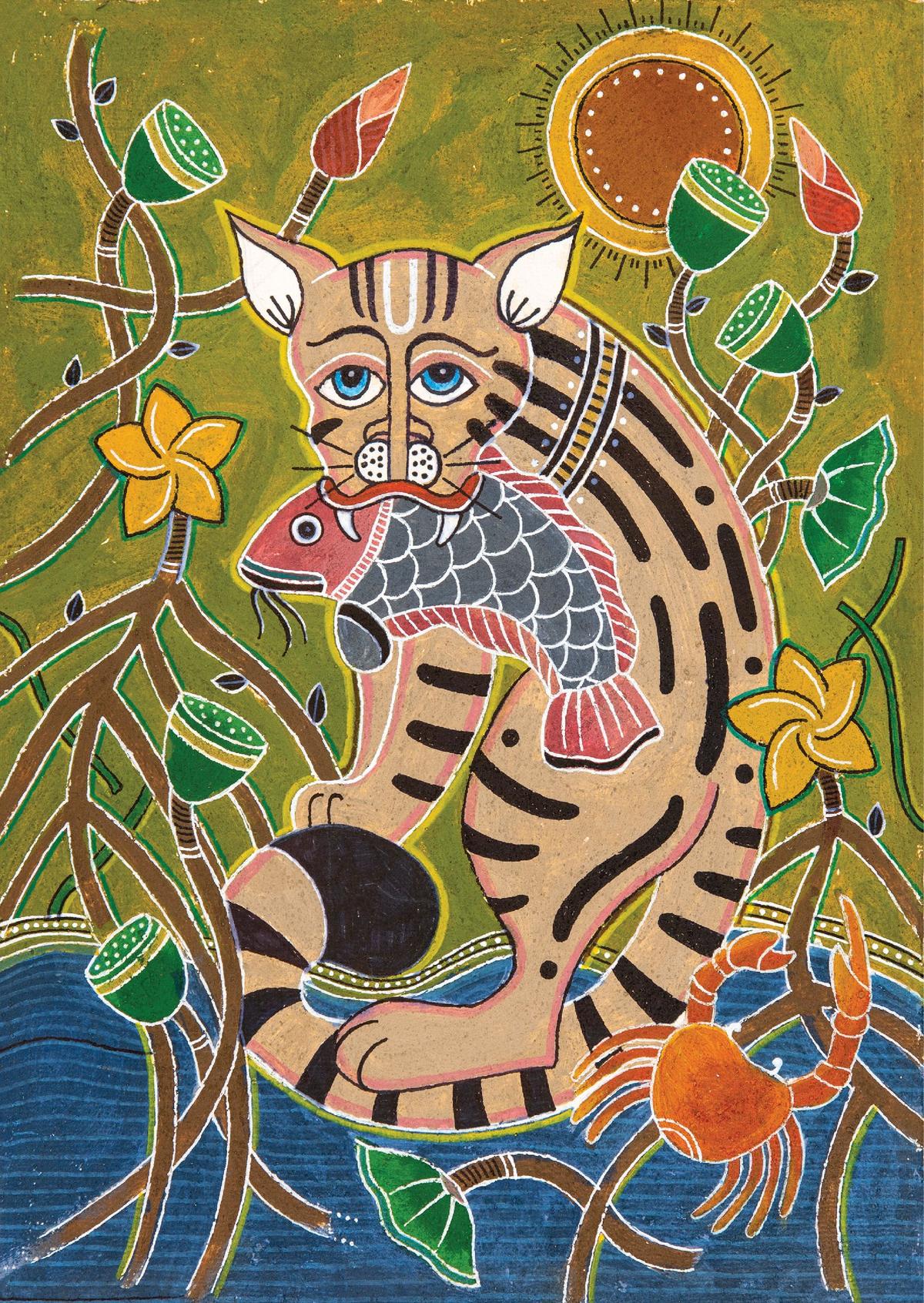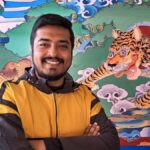The next in the monthly series by WWF-India that highlights niche and unconventional green careers through the stories of well-known personalities from the field of environment and conservation
Growing up in Bhubaneswar, Odisha, art and Nature always spoke to me in ways that words couldn’t. While others saw letters on a page, I was drawn to the vibrant world of Pattachitra, the traditional palm-leaf paintings that told stories through intricate lines and colours. Those motifs of birds, forests, and mythical creatures became my first lessons in storytelling, long before I knew I would become a designer.

A painting of a woodpecker.
| Photo Credit:
Special Arrangement
After graduating in Communication Design from the National Institute of Fashion Technology (NIFT), New Delhi, I began my career at an art and design studio, but my heart was still wandering through the forests. Whenever I could, I would escape to the foothills of the Himalayas. I began sketching wildlife between deadlines — tigers on my desktop, hornbills in clay — as a way to stay connected to what truly moved me.
Leap of faith
In 2020, I took a leap of faith. I left my full-time job to create my first Wildlife Map of Odisha. It was a passion project that blended my love for natural history, traditional Indian art, and contemporary design. That one experiment became a turning point. Commissions, collaborations, and recognition followed and, soon, my art began finding its place not just in galleries but in conservation spaces too. It helped me discover my own visual language, which I call FolkIndica, an artistic bridge between India’s folk traditions and its living biodiversity.

Biodiversity map of Kalahandi.
| Photo Credit:
Special Arrangement
This journey wasn’t a sudden shift but the culmination of years of curiosity, observation, and awe. I still remember my first visit to Ranthambhore and Keoladeo National Parks during my graduation project. It opened up a world I had only read about — the symphony of birdcalls, the stillness of forests, and the stories carried by the wind. Later, in nearby villages, I saw how these experiences were reflected in local art and folklore.
My workdays usually begin with research, poring over field photographs, scientific papers, folk paintings, and historical accounts of animal sightings. My workspace often looks like a map of chaos: papers, rough sketches, and colour tests scattered everywhere. I let ideas unfold slowly, moving from sketches to textures, until the final form begins to emerge on canvas.
Sources and research
The most exciting part of my work lies in sourcing stories. Research often takes me into a maze of references where I lose track of time. But that’s also what keeps me going; the thrill of discovery, of piecing together fragments of art, ecology, and culture into one coherent frame.
Art practice demands patience but, even more so, observation. To draw life, you must learn to see, not just look. The tilt of a heron’s neck, the curl of a leaf, the way a tiger melts into its surroundings … all these details teach you how interconnected life truly is. Beyond technical skills, I have learned that humility and listening are crucial, especially when working with local communities whose wisdom often holds the key to understanding the land.

A mud painting by Sudarshan Shaw.
| Photo Credit:
Special Arrangement
Some of my greatest teachers have been the forest communities I have met; people whose lives are intertwined with the rhythms of the wild. Their wisdom, born of centuries of coexistence, continues to guide my work. I’ve also been deeply inspired by the humility and skill of folk artists whose strokes and symbols carry generations of ecological understanding.
Over the years, my art has become a way of documenting natural history through the lens of culture. I now collaborate with scientists, museums, and institutions on projects that make ecology more accessible to people, through exhibitions, educational material, or installations. My long-term dream is to keep exploring this intersection of art, science, and storytelling, and to take FolkIndica to new landscapes and communities.
To young people exploring green careers, travel as much as possible and see with all your senses. Art and Nature share a wild kinship; both resist boundaries and speak in a language beyond words. The bigger the space we create for art in our hearts, the bigger the home we make for the wild.
Published – October 25, 2025 06:00 pm IST

